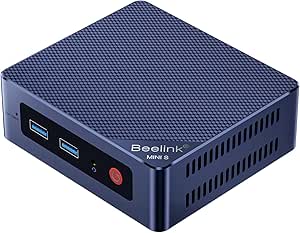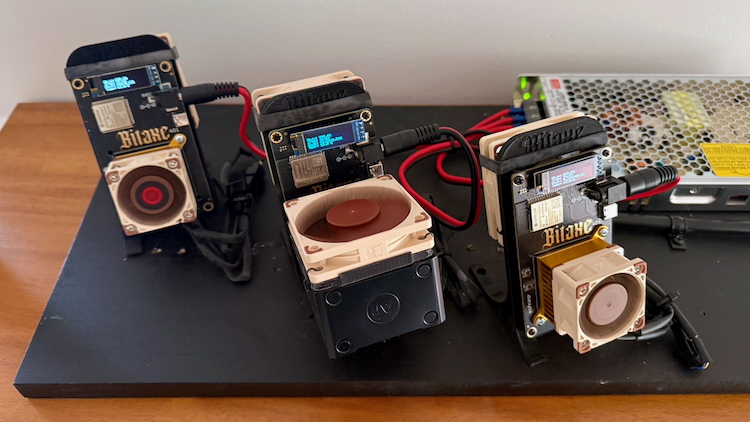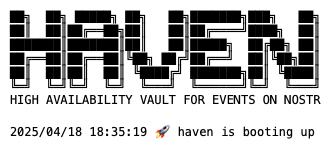-
 @ Galaxie 5000
2025-04-26 15:05:41
@ Galaxie 5000
2025-04-26 15:05:41Background
Last year I got interesting in running my own bitcoin node after reading others' experiences doing so. A couple of decades ago I ran my own Linux and Mac servers, and enjoyed building and maintaining them. I was by no means an expert sys admin, but had my share of cron jobs, scripts, and custom configuration files. While it was fun and educational, software updates and hardware upgrades often meant hours of restoring and troubleshooting my systems.
Fast forward to family and career (especially going into management) and I didn't have time for all that. Having things just work became more important than playing with the tech. As I got older, the more I appreciated K.I.S.S. (for those who don't know: Keep It Simple Stupid).
So when the idea of running a node came to mind, I explored the different options. I decided I needed a balance between a Raspberry Pi (possibly underpowered depending on use) and a full-blown Linux server (too complex and time-consuming to build and maintain). That led me to Umbrel OS, Start9, Casa OS, and similar platforms. Due to its simplicity (very plug and play), nice design, and being open source: GitHub), I chose Umbrel OS on a Beelink mini PC with 16GB of RAM and a 2TB NVMe internal drive. Though Umbrel OS is not very flexible and can't really be customized, its App Store made setting up a node (among other things) fairly easy, and it has been running smoothly since. Would the alternatives have been better? Perhaps, but so far I'm happy with my choice.

Server Setup
I'm also no expert in OpSec (I'd place myself in the category of somewhat above vague awareness). I wanted a secure way to connect to my Umbrel without punching holes in my router and forwarding ports. I chose Tailscale for this purpose. Those who are distrustful of corporate products might not like this option but again, balancing risk with convenience it seemed reasonable for my needs. If you're hiding state (or anti-state) secrets, extravagant wealth, or just adamant about privacy, you would probably want to go with an entirely different setup.
Once I had Tailscale installed on Umbrel OS, my mobile device and laptop, I could securely connect to the server from anywhere through a well designed browser UI. I then installed the following from the Umbrel App Store:
- Bitcoin Core
- Electrum Personal Server (Electrs)
At this point I could set wallets on my laptop (Sparrow) and phone (BlueWallet) to use my node. I then installed:
- Lightning Node (LND)
- Alby Hub
Alby Hub streamlines the process of opening and maintaining lightning channels, creating lightning wallets to send and receive sats, and zapping notes and users on Nostr. I have two main nsec accounts for Nostr and set up separate wallets on Alby Hub to track balances and transactions for each.
Other apps I installed on Umbrel OS:
- mempool
- Bitcoin Explorer
- LibreTranslate (some Nostr clients allow you to use your own translator)
- Public Pool

Public Pool allows me to connect Bitaxe solo miners (a.k.a. "lottery" miners) to my own mining pool for a (very) long shot at winning a Bitcoin block. It's also a great way to learn about mining, contribute to network decentralization, and generally tinker with electronics. Bitaxe miners are small open source single ASIC miners that you can run in your home with minimal technical knowledge and maintenance requirements.
Open Source Miners United (OSMU) is a great resource for anyone interesting in Bitaxe or other open source mining products (especially their Discord server).

Although Umbrel OS is more or less limited to running software in its App Store (or Community App Store, if you trust the developer), you can install the Portainer app and run Docker images. I know next to nothing about Docker but wanted to see what I might be able to do with it. I was also interested in the Haven Nostr relay and found that there was indeed a docker image for it.
As stated before, I didn't want to open my network to the outside, which meant I wouldn't be able to take advantage of all the features Haven offers (since other users wouldn't be able to access it). I would however be able to post notes to my relay, and use its "Blastr" feature to send my notes to other relays. After some trial and error I managed to get a Haven up and running in Portainer.

The upside of this setup is self-custody: being able to connect wallets to my own Bitcoin node, send and receive zaps with my own Lightning channel, solo mine with Bitaxe to my own pool, and send notes to my own Nostr relay. The downside is the lack of redundancy and uptime provided by major cloud services. You have to decide on your own comfort level. A solid internet connection and reliable power are definitely needed.

This article was written and published to Nostr with untype.app.